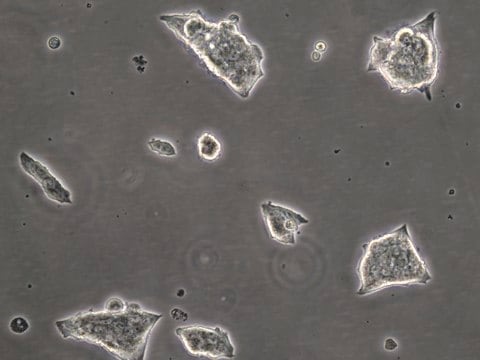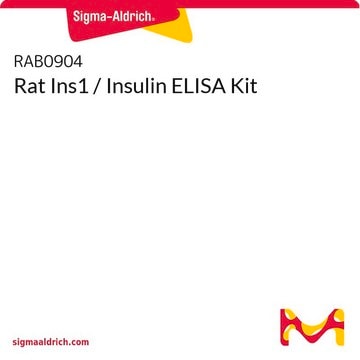SCC208
INS-1 832/3 Rat Insulinoma Cell Line
Rat
Sinônimo(s):
INS1 832/3, INS-1 (832/3), 832/3
About This Item
Produtos recomendados
Nome do produto
INS-1 832/3 Rat Insulinoma Cell Line, INS-1 832/3 rat insulinoma cell line is a useful model for insulin secretion regulation and pancreatic islet beta-cell function studies.
fonte biológica
rat
técnica(s)
cell culture | mammalian: suitable
Condições de expedição
ambient
Descrição geral
Source:
INS-1 832/3 is a derivative of INS-1 cells originally established from an x-ray induced insulinoma in rat1. The INS-1 832/3 cell line is a subclone of INS-1 that was stably transfected with a CMV promoter-human insulin expression plasmid carrying a geneticin (G418)-resistance marker for selection [2].
Descrição de linhagem celular
Aplicação
Metabolism
Diabetes
Qualidade
• Cells are tested negative for infectious diseases by a Mouse/Rat Comprehensive CLEAR panel by Charles River Animal Diagnostic Services.
• Cells are verified to be of rat origin and negative for inter-species contamination from mouse, chinese hamster, Golden Syrian hamster, human and non-human primate (NHP) as assessed by a Contamination CLEAR panel by Charles River Animal Diagnostic Services.
• Cells are negative for mycoplasma contamination.
Armazenamento e estabilidade
Exoneração de responsabilidade
Unless otherwise stated in our catalog or other company documentation accompanying the product(s), our products are intended for research use only and are not to be used for any other purpose, which includes but is not limited to, unauthorized commercial uses, in vitro diagnostic uses, ex vivo or in vivo therapeutic uses or any type of consumption or application to humans or animals.
Código de classe de armazenamento
12 - Non Combustible Liquids
Classe de risco de água (WGK)
WGK 1
Ponto de fulgor (°F)
Not applicable
Ponto de fulgor (°C)
Not applicable
Certificados de análise (COA)
Busque Certificados de análise (COA) digitando o Número do Lote do produto. Os números de lote e remessa podem ser encontrados no rótulo de um produto após a palavra “Lot” ou “Batch”.
Já possui este produto?
Encontre a documentação dos produtos que você adquiriu recentemente na biblioteca de documentos.
Active Filters
Nossa equipe de cientistas tem experiência em todas as áreas de pesquisa, incluindo Life Sciences, ciência de materiais, síntese química, cromatografia, química analítica e muitas outras.
Entre em contato com a assistência técnica








